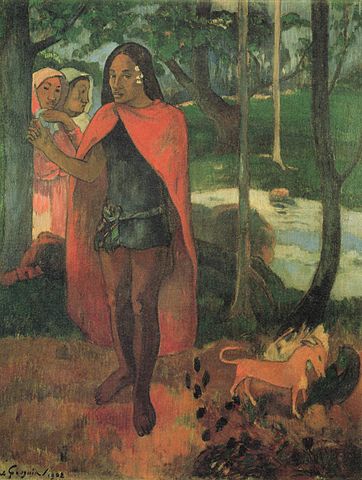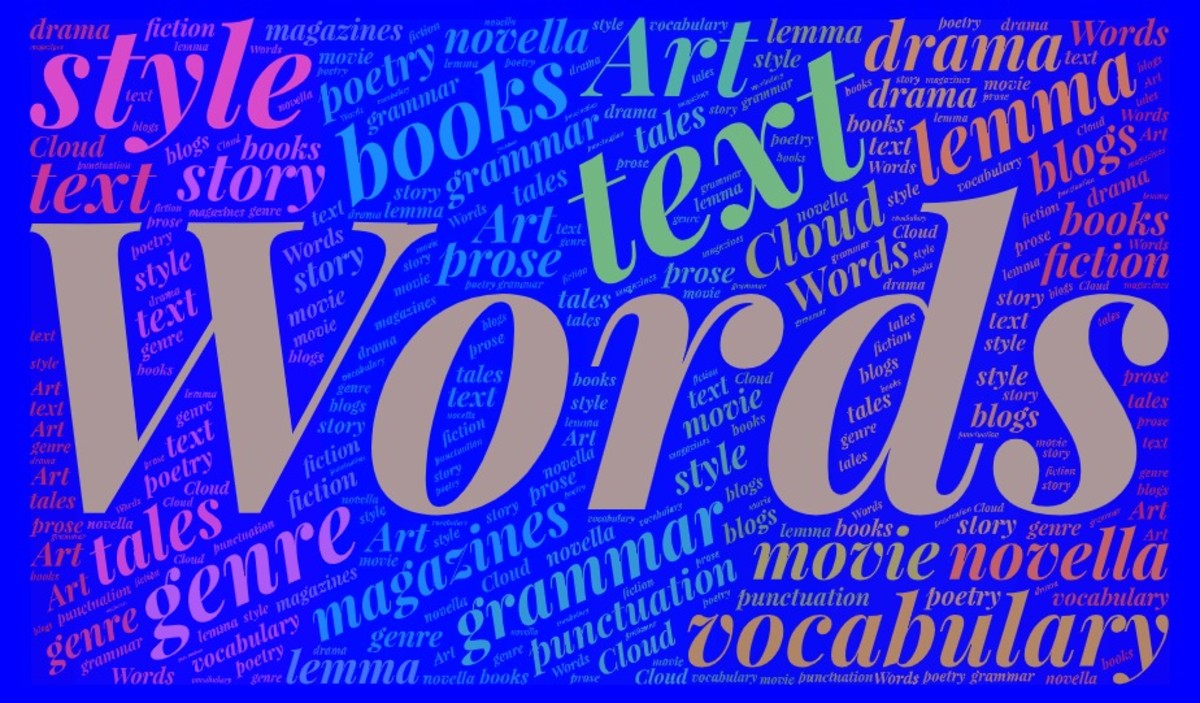Four Writing Strategies to Learn from The Red Magician by Lisa Goldstein

Lisa Goldstein wrote The Red Magician, a book about magic, WWII, and a Jewish town. The quick write-up description states that “The hidden world of Eastern European Jews during the 1940s turns into a world of wonders in an American Book Award-winning fantasy tale that transcends the Holocaust with magical optimism.” It was originally published in 1982, and it won a National Book Award. It was republished in 1995. It’s an excellent read, but it’s more than that – it also contains within it examples for other writers to use. It has four distinct writing strategies to learn from it: dealing with a touchy subject, beginning and ending, using a theme both overtly and subtly, and how to separate what the audience knows versus what the characters know.
Reading and Writing
Do you find that you learn how to write from the books you read?
How to deal with a touchy subject
Goldstein managed it so well, I believe, because she didn't get more specific than she needed to. “Those on the right were taken to the barracks – low buildings that contained beds built like shelves for hundreds and hundreds of people” (p. 104). “Every few weeks the barracks would be visited by guards, and a few people would be taken away. She did not know where the people went, and she did not try to find out. She said nothing to anyone, and the others ignored her. One day a few months later she was among those taken away. She was led outside and put on another train heading to another camp…Because Kicsi was quiet and docile she was given what was considered a good job: she was to work in the kitchen squad…She went to work, often for twenty hours a day, came back to the crowded room and slept, and went to work with the dawn, woken by the dogs” (p. 105). This is probably some of the vaguest descriptions I’ve read of work and concentration camps, yet it does the job. She is in a fog and a haze, and it comes across, while still getting across an image of where she is. If the author had gone too much further, the specifics may have tripped her up.
It reminded me of the old adage of research. When you research a subject, you only want to include about 10% of the information you've found, or you may find that you are engaging in info-dumps and/or boring your readers. The author didn't have this problem; if anything, she skimmed over the horrors a bit too much, making it almost unbelievable when Kicsi seems to have been as affected as she was. Obviously, we believe that she was that affected because we know about it, but the lack of details, while strong in one way, was a bit weak in another.
How to begin and end
The first line of the book was meant to - and did - immediately draw me in. "In the town where Kicsi grew up there was a rabbi who could work miracles." Well, c'mon now, who doesn't want to read about a magical rabbi? Then the author uses repetition to make sure she keeps our attention - the second paragraph begins with, "The rabbi who could work miracles was sitting in the living room talking to her parents as Kicsi came down the stairs early one morning." So now we know that, not only can this rabbit perform miracles, but he is in her house. We don't know why yet, but we know about miracles, and we know that Kisci is involved with at least one of these miracles.
The end of the book also involved magic - Kisci's wish of going to foreign lands, which had been a nightmare so far, becomes a blessing again - and a miracle. Voros manages to get her included in the list of fifteen people who are going to America where she will be able to be reunited with her family. And Voros does further magic - when Kisci is brought to the port, Voros is told that he cannot ride with her, but he still tells her "I'll see you at the dock" (p. 191). And, of course, "they drove into the port. Voros was there, waiting for her as she stepped down from the bus." This is the full circle of the story; we are told, in the beginning, that a rabbi can do miracles. In the end, we see that the rabbi is not the only one who can do miracles, and we see what had started out with Kicsi ending with Kicsi.

Using a theme both overtly and subtly
The theme was the power of words.
The first time we see the mention of words being important is on page 8, when the rabbi says that the school must stop teaching Hebrew. "Hebrew will be spoken only when the Messiah comes and we return to the Holy Land. That is to say, when God wills it. Until then Hebrew is to be spoken only in prayer." Okay, big glowing sign here - words have power.
The next page, we have more power in words - the rabbi tells everyone to keep their children home because, "You see, I will put a curse on the school" (p. 9). This, obviously, scares the children, who talk about what bad things can happen. Their mother responds with the most overt mention of words and their power so far - "Hush...You shouldn't let the devil hear you say such things or they may come true" (p. 10).
Kicsi goes to school, and on her way, she makes a wish, but "She was not quite sure what she had wished for. She knew it had to do with words - words that conjured up other words within her mind. Siam: silk, spices, tea, houseboats and jungles and sand under the moonlight. Arabia: camels, figs, dates, leagues of desert sand, women with their faces hidden by veils of old coins. Paris, New York: fashionable dresses and silk stockings and more automobiles than she had seen in a lifetime" (p. 11).
So in the space of just four pages, we've had repeated references to words having power, whether it is overt or subtle. It helps to build quickly without feeling repetitious, and it tells us, the readers, just how important words will be.
Of course, that isn't the end of words and power - on page 15, after Voros has appeared in town, Kicsi entreats him to "tell me a story." She wants to be transported by the magic of his words; she is enthralled. When he tells the story, however, Kicsi is disappointed because she feels the words he spoke were not true. "Well, you know how stories are. Parts of them are true and parts are made up. And anyway, you didn't ask me for a true story" (p. 16). Again - the power of words, as if her specifying that she wanted "true" would have held him to that.
Probably the biggest and most obvious/overt mention of the power of words was dealing with the creation of the golem by Voros. The rabbi, talking to Voros, states that, “I know that you understand the importance of names. I am curious. Tell me. There are many schools of thought concerning the word that should be written on the forehead of a golem. Which word will you choose?” (p. 62). In the legend of the golem, the word that animates it does matter quite a bit, and it is generally a word that is considered to have great power as it is giving the inanimate a life force. Voros does write a name on the golem’s forehead to bring it to life – “Adam.” The rabbi calls it blasphemy, accusing Voros of playing at being God, and attacks the golem, managing to erase one letter, changing “Adam” into “dam,” which means blood. Immediately, the golem falls and “blood spilled slowly from its wound, blood that could barely be seen against the red of the clay. More blood came, and more, spilling over the golem’s arms and legs and onto the ground. The golem wavered. It fell” (p. 64). Here the author is showing the reader just how powerful words are – they cause both life and death.
What the audience knows versus what the characters knows
Now, the huge magic trick of this story, of course, is what the characters know versus what the readers know. The readers know that WWII is coming, and they know that the Nazis will sweep up the Jewish town and take the people away. When Voros shows up with his dire warnings and predictions, the audience knows to immediately side with Kicsi because she believes him and because she has had the dreams as well. The rest of the town, however, thinks that he is the crazy one, and they listen to the rabbi who tells them that no such thing will happen. We know, though. When Voros tells them, and when the rabbi gets mad and tells everyone that it isn't true, we know. When some people leave the town for safer areas, we know. When the rabbi goes away (really turns into a wolf, but says he is traveling), we know. When they are told to report to the building, and then when the railroad cars show up...when they are taken to camp...when they are stripped of their belongings...when they are told to go to the left or to the right...we know. We know the dangers they are encountering, and we know what is happening.
That knowledge does a few things. First, it lets the author avoid being specific in many of her details. She doesn't even have to explain the ovens and the smoke to us. She doesn't have to explain what happens to the people in the other line. Second, it makes us, the readers, involved in the story, making us want to cry out, "Go hide in the woods! Go run away! Red was right!" We want to yell at the characters that they are fools to do what they're told. But here, again, she works her magic - showing us the power of words. People simply say, “What can they do to us?” (repeated multiple times on pages 96 – 99). People follow orders that are written in German that they can’t understand because they are words; they are magic. People reassure themselves that nothing too horrible can happen, repeating their phrase; it is magic. The magic is here, and while we may not understand why the people in the book would do such things since we readers know what's really going on, we know that the magic of the words can hold them in place and make them suffer through to their fates.






